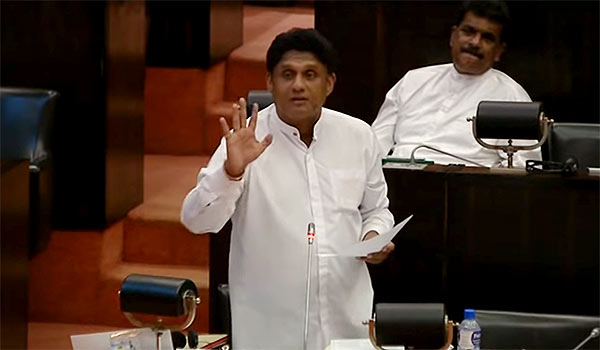Opposition Leader raises concern over high interest micro-finance debt traps

Opposition Leader Sajith Premadasa yesterday (20) raised concerns in Parliament over the issue of the victims of micro finance debt traps. Premadasa questioned if the government is to provide a different financial facility other than micro financing, for low income earners to improve their livelihood.
Premadasa made these observations raising a question under the Standing Order 27 (2). Premadasa observed, “Although well-regulated microfinance programmes have been successful in expanding the income-generating capacity of low-income earners and improving their living standards in some parts of the world, Sri Lanka’s microfinance has become a debt trap for low-income earners. It has been reported that a large number of microfinance institutions are currently operating in the country.
Many microfinance borrowers allege that all of these institutions are not properly regulated and that the owners of the institutions act at their own discretion.”
Premadasa said: “Although the government has set a maximum interest rate of 35% for microfinance loans, some lenders charge interest rates ranging from 100% to 220%.
Many people in both rural and urban areas are now facing severe difficulties due to the inability to repay loans obtained from microfinance institutions. At the same time, many people are tempted to commit suicide.
Although the main objective of microfinance loans is to uplift the living standards of low-income individuals, many borrowers use these loans to meet their day-to-day needs, apart from taking the necessary steps to raise their living standards.
As a result, many people’s debt burden continues to rise and they fall into a huge debt trap. Most of the microfinance borrowers are women and they are at risk of various forms of harassment when they are unable to repay their loans. Rural women have been severely affected by this microfinance crisis. This has developed into not only an economic problem but also a social problem and this problem needs to be solved urgently.” Premadasa questioned, “What are the policy measures taken by the Government to address the Micro Financial Crisis which has been identified by experts as one of the major socio-economic problems in Sri Lanka at present? Although the previous government initiated a programme to write off debts in the Northern Province where this problem was acute, the programme has been suspended at present. For low income earners who are already in debt due to micro finance loans. Has the government implemented any relief programme? Although the main objective of the microfinance system is to increase the contribution of low income earners to the economic development of the country, the low income earners will continue to be a burden to the economy. It has been observed that improving the living standards of low income earners by granting micro finance loans alone is not a very successful program. Is the government working to develop another suitable methodology instead? If not, is it estimated that microfinance has improved the living standards of low-income earners as a whole or contributed to the economy?”.
(Source: Daily News – By Sandasen Marasinghe, Camelia Nathaniel and Amali Mallawaarachchi)
Latest Headlines in Sri Lanka
- Lanka Ashok Leyland donates vehicles worth Rs. 65 Million to support Sri Lanka’s disaster response December 6, 2025
- Sri Lanka President orders unified drive to speed up disaster recovery December 6, 2025
- Sri Lanka extends income tax return deadline due to Cyclone Ditwah December 6, 2025
- CBSL announces relief measures for people and businesses hit by cyclone and floods December 6, 2025
- German Defence Attaché calls on Sri Lanka’s Defence Secretary December 5, 2025


